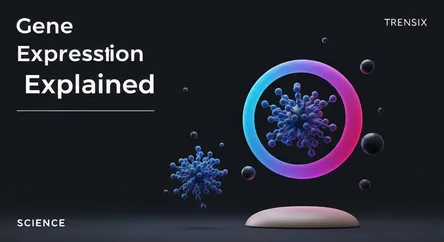Science
Gene Expression Explained

Explore gene expression, the vital process of turning genetic instructions in your DNA into functional proteins that define life and health.
What is it?
Gene expression is the fundamental process by which the information stored in a gene is used to create a functional product, such as a protein or RNA molecule. Think of it as a cell reading a specific instruction from its DNA cookbook to build what it needs. This intricate process involves two main stages: transcription, where a segment of DNA is copied into a messenger RNA (mRNA) molecule, and translation, where the mRNA sequence is used as a template to assemble a protein. This regulation allows cells to specialize, for example, enabling a muscle cell to behave differently from a neuron, despite both containing the same DNA.
Why is it trending?
Interest in gene expression is surging due to breakthroughs in fields like epigenetics and personalized medicine. Scientists are discovering how external factors like diet, stress, and environment can modify gene expression without changing the DNA sequence itself. This has huge implications for understanding disease. Furthermore, technologies like CRISPR and mRNA vaccines (as used for COVID-19) are based on manipulating or utilizing the principles of gene expression, making it a central topic in modern biotechnology and medical research.
How does it affect people?
Gene expression is at the core of human health and disease. It dictates everything from our physical traits, like eye color, to how our bodies respond to pathogens and medications. When gene expression goes wrong—either a gene is overactive or silenced—it can lead to conditions like cancer, diabetes, and autoimmune disorders. Understanding your unique gene expression profile can pave the way for personalized treatments tailored to your genetic makeup, offering more effective therapies with fewer side effects. It’s the dynamic process that makes each of us biologically unique.